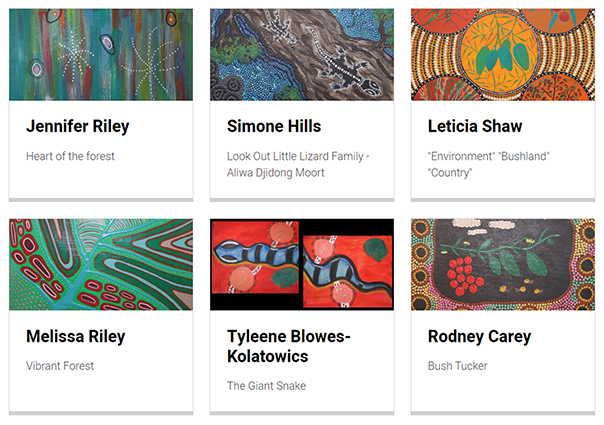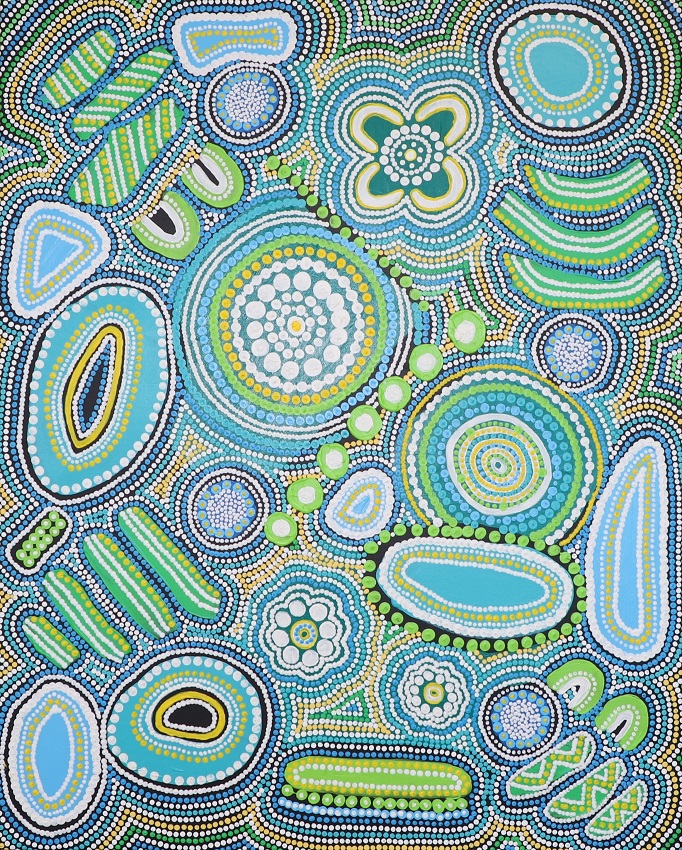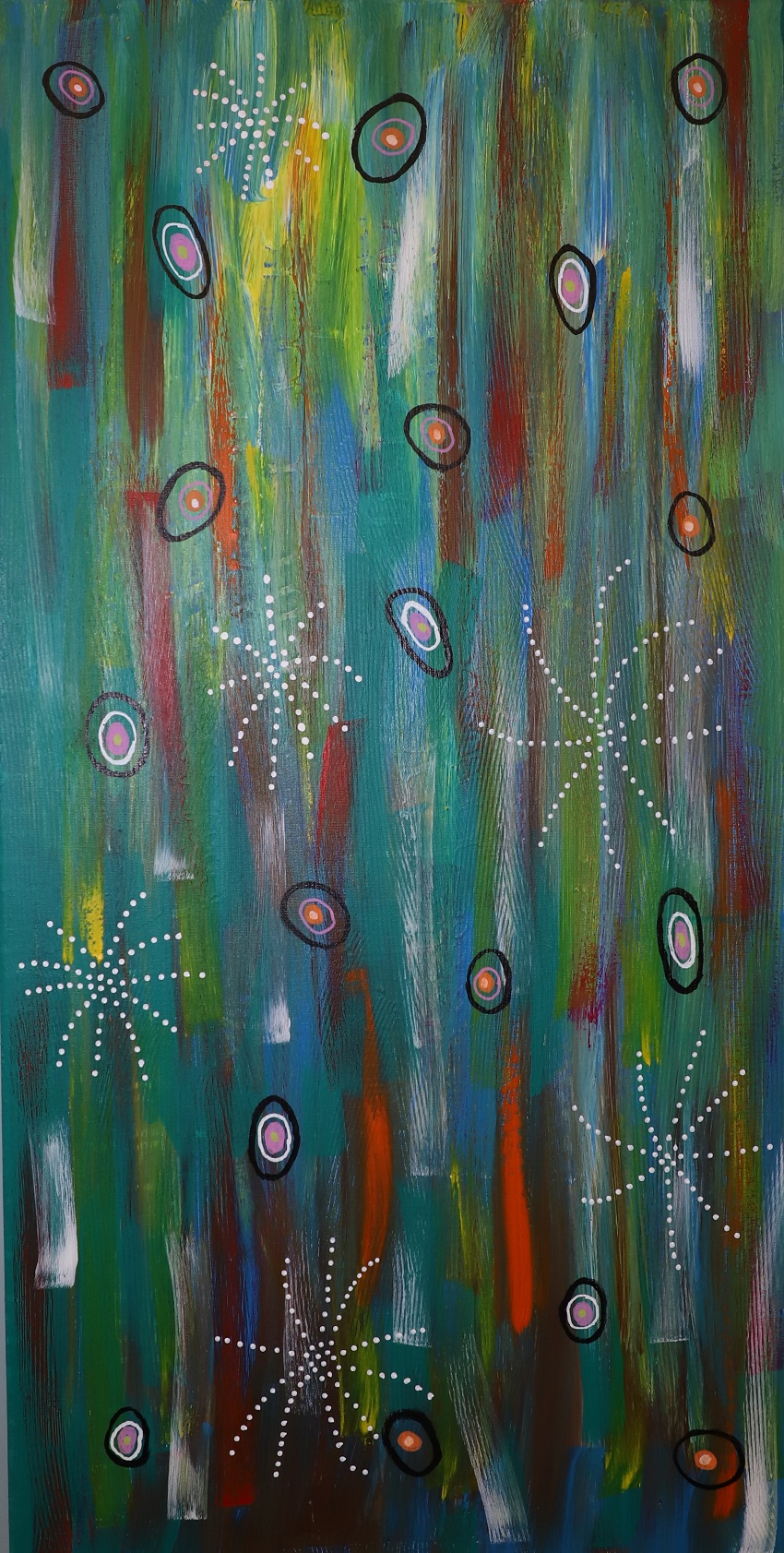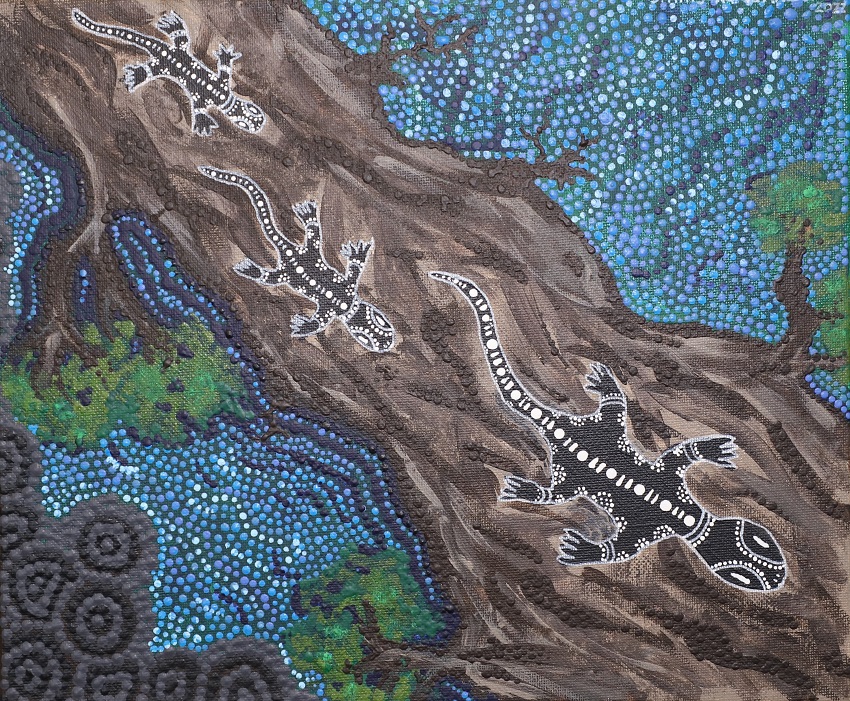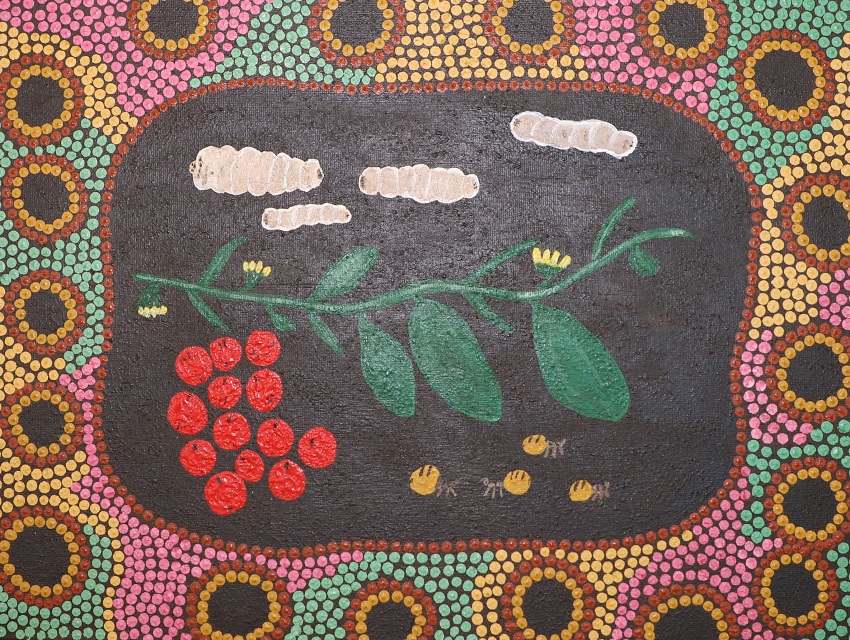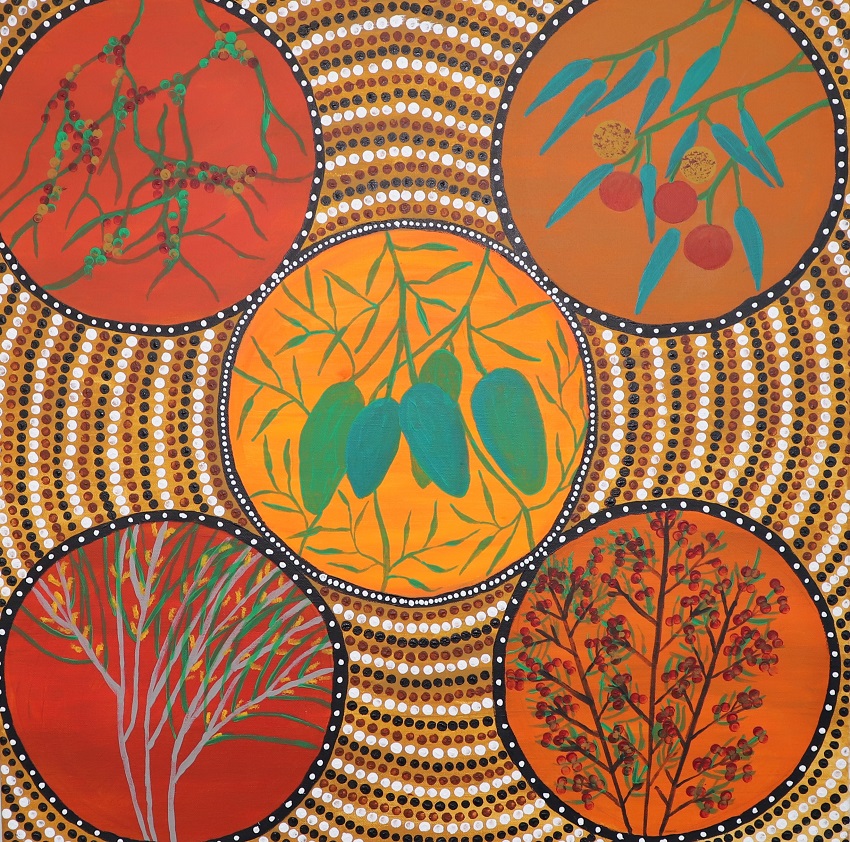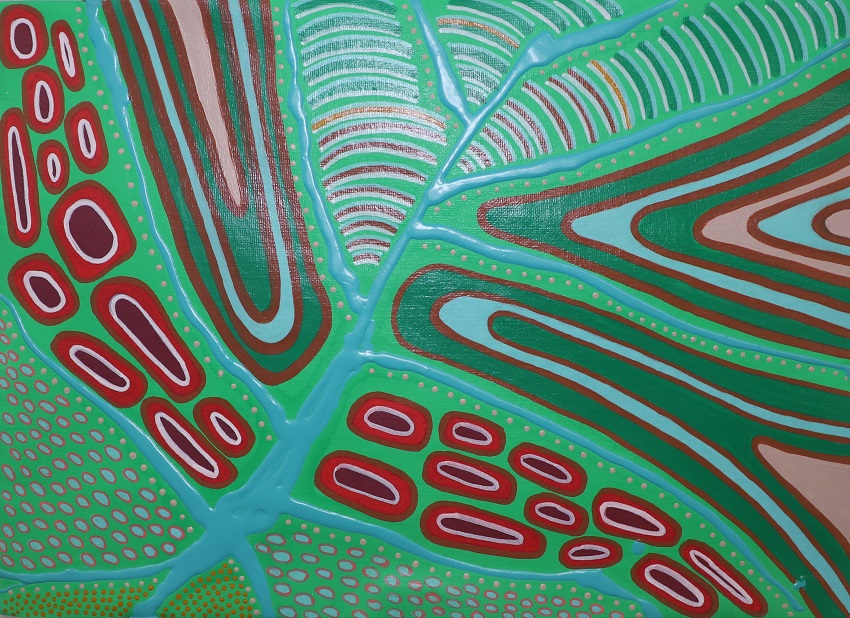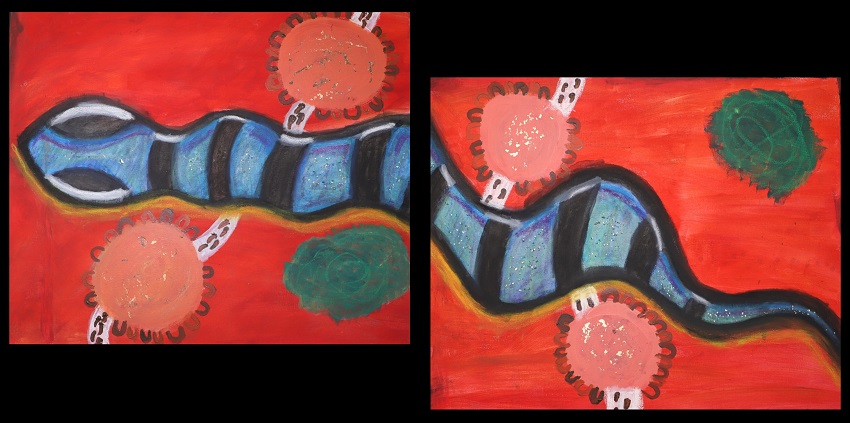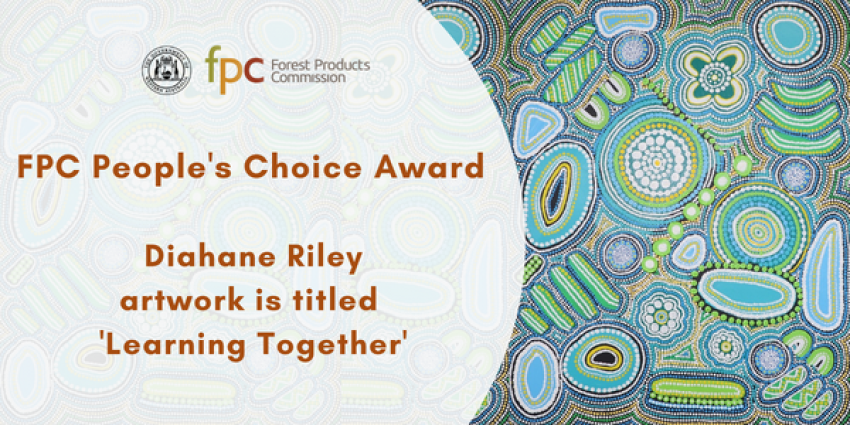
The competition was launched during NAIDOC week to provide a forum to engage with Aboriginal and Torres Strait Islander peoples and celebrate and recognise the history, culture, and achievements of Aboriginal and Torres Strait Islander peoples.
Seven entries were received from artists across WA and from different language and cultural groups, including:
Ngadju people - Ngadju country extends in the South-East of WA covering an area more than 120,000 square miles (larger than the United Kingdom) it surrounds the town of Norseman and expands the pristine Great Western Woodlands between Kalgoorlie and Esperance which is the largest intact temperate woodland left on Earth, home to 30 per cent of Australia's eucalyptus. It is also one of two sites in WA that has been dedicated to the National Reserve System under the Federal Government's new IPA program.
Noongar people - Noongar country (Noongar boodja) covers the entire south-western portion of WA, from Geraldton on the west coast to Esperance on the south coast. There are 14 different Noongar groups: Amangu, Ballardong, Yued, Kaneang, Koreng, Mineng, Njakinjaki, Njunga, Pibelmen, Pindjarup, Wadandi, Whadjuk, Wiilman and Wudjari which make up the Noongar Nation and are part of the South West Native Title Settlement.
Wangkatja (Wongi) people - The Wangkatja language groups cover the following towns: Coolgardie, Kalgoorlie, Menzies, Leonora and Laverton; these towns encompass the North-eastern Goldfields region of Western Australia. The Wongi group consists of eight peoples: Maduwongga, Waljen, Ngurlutjarra, Ngaanyatjarra (NG Lands), Bindinni, Madatjarra, Koara (Kuwarra) and Tjalkatjarra.
Gooniyandi people - Gooniyandi country is located in the central Kimberley region of WA and includes the Fitzroy River. The country covers 11173 square kms of land and water and includes the Indigenous-owned pastoral stations of Bohemia Downs, Mt Pierre and Louisa Downs and portions of the non-Indigenous Christmas Creek, Gogo, Fossil Downs, Larrawa and Margaret River pastoral stations.
Based on the calibre of submissions, the FPC decided to purchase all the entries for an FPC art collection. A FPC Staff Choice Winner has been selected based on the staff competition judging that took place. All seven artists have entered into a purchase and copyright contract with the FPC, so all artworks are now available for our ongoing enjoyment and cultural learning.
Take the time to look at and read about these artworks, all conveying the deep connection that Aboriginal people have with the land and forests.
Diahane Riley
Show more"Learning Together"
Being in the bush/forest, inland or along the coast, together with family, friends and loved ones is a beautiful and memorable time. In the bush perfect opportunities arise for elders to pass on important knowledge to younger family members. These times are extremely important to learn how to care and respect nature. Not only are we with loved ones but we are among nature, among the things we love and care about deeply – the plants and animal life play an important part of our culture. Living in harmony with nature meant survival – our life. We will always have a deep connection to the land.
Jennifer Riley
Show moreHeart of the forest
Beauty of the forest colours are so breathtaking. You see art through the spiders how they thread their web from tree to tree, what beauty the forest produces.
Simone Hills
Show moreLook Out Little Lizard Family - Aliwa Djidong Moort
To me forestry means always respecting and caring for our beautiful bushlands and animals that provide us with food, bush medicine, shelter and connection to our families. Always returning back things we borrow from the bush when we are finished, learning from our Aboriginal Elders and helping the next generations continue to learn traditions and how to look after our land. This is a piece inspired by a family 'moort' of 3 little lizards 'djidong' trying to run away from the water to safety as the tree they call home falls into the bilya 'river'.
Rodney Carey
Show moreBush Tucker
The artist explains the work captures some of their favourite forestry products found in the Goldfields region, bardee grubs, quandong fruit, honey ants and Karlkurla (silky pear), which is also the Wongi word for Kalgoorlie.
Leticia Shaw
Show more"Environment" "Bushland" "Country"
My Representation of my artwork is Kalgoorlie, Kulkula is the original name for Kalgoorlie which is the green bush pears and the other plants you see in my artwork are from the Goldfields like the Bardi tree, budga budga etc... that is my story of my painting.
Melissa Riley
Show moreVibrant Forest
My art interpretation of the beautiful forest is strong, vibrant, and beneficial to each other on a spiritual and mental level. There were times when we would camp out at around the weir, I could see the areas of the forest being harvested and maintained, and each year we would visit, the regrowth would amaze me at how lush and green the forest would be. Springtime seeing the wildflowers and berries grow through the forest is beautiful. As I started this painting, I didn’t use a paintbrush, I free handed it, as I wanted the start of the painting to have a natural beginning, just like the forest, a natural beginning, then I used my resources (brushes and paint pens) to complete, just like today, how hard workers use their resources to maintain, care and respect the forest to keep it alive for generations to come.
Tyleene Blowes-Kolatowics
Show moreThe Giant Snake
The Indigenous believe at the bottom of the riverbed lived a giant snake.
If the children got too close to the river, the snake would eat them.
The elders would tell the young children to stay away from the river to keep them safe.
One day, the snake got so hungry it slid out of the riverbed to look around for children to eat.
The elders noticed the snake and threw spears and rocks at it to scare it away.
The giant snake escaped into the land and travelled across the country, creating the forests, rivers, valleys, and mountains. It collected the many beautiful and different colours of the forests, rivers, valleys, and mountains.
It collected the many beautiful and different colours of the forests, rivers, valleys, and mountains as they were created, to assist it blend in and stay safe from the Elders.



